Hoi An Museum is a place that preserves artifacts and evidence of a period filled with ups and downs, the transformations of this city. Through these relics, visitors will come to understand the people, culture, and history of this place most vividly. Join DanangPrivateCar.com’s tour to explore 6 museums in Hoi An and revisit the days of old. Rediscover the enduring values over time of the people of An Thanh land.
Table of Contents
Hoi An – A Place Dubbed the “Living Museum”
Hoi An city is located at the lower reaches of the Thu Bon River, once a bustling trading port. It served as a hub for trade between Vietnamese merchant ships, China, Japan, and several Western countries during the 17th and 18th centuries.
Originally an ancient city, Hoi An boasts a cultural fusion that remained unaffected by the two wars of the late 20th century. This is the reason why the city has become an enticing tourist destination.
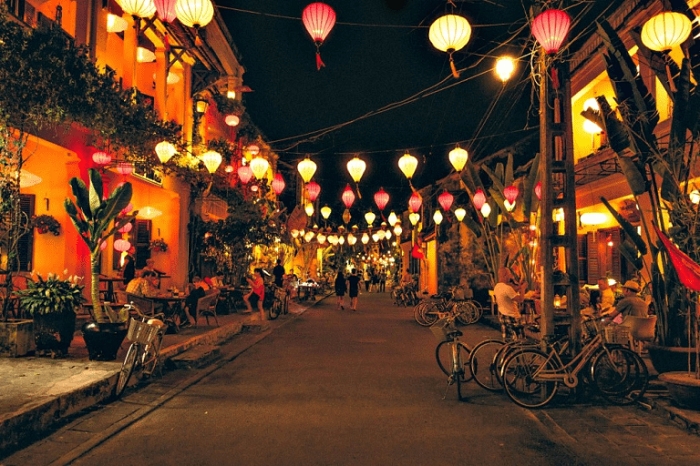
In March 1985, Hoi An was granted the title of National Historic Site by the Ministry of Culture. In December 1999, UNESCO recognized it as a World Cultural Heritage Site. Thanks to the well-preserved heritage found here, Hoi An is often referred to as the “Living Museum.” It’s a place where ancient values coexist with the daily activities of its people.
Within Hoi An’s Old Town, traces of the Chinese, Japanese, and Cham cultures remain vivid. The marks of these cultures are preserved in various aspects, from customs to cuisine.
What makes Hoi An Museum so appealing to visitors?
For many tourists, including those who participated in the war, learners, history enthusiasts, and even young Vietnamese today, visiting the museums in Hoi An is a common interest. Perhaps this place holds an abundance of “attraction” that cannot be fully perceived at first glance.
The museums preserve ancient artifacts dating back hundreds of years.
In the museums of Hoi An, ancient artifacts with histories spanning centuries are preserved. They are evidence of a prosperous era of this region. These artifacts, whether they are cups, bowls, plates, or dishes, are more than just objects; they are a part of history, a part of Quang Nam people, and an essential part of Vietnam.

For those who value and seek to understand traditional values, these artifacts hold great significance. They are deemed “sacred” because they represent and embody a bygone era. These values are precious; they form the core for future development.
Hoi An Museum recreates life from centuries ago.
Vivid scenes from 200 years ago or even 600 to 700 years ago are reenacted within the museums. These scenes allow visitors to experience a humane and traditional-rich Hoi An. A colorful Hoi An of life.
The museum is also a novel check-in spot for the younger generation.
A trend of seeking out old values is spreading among the young Vietnamese community. Here, the younger generation enjoys exploring history to further cherish core values, something crucial for modern life. This place becomes a unique and humanitarian check-in point for the Vietnamese youth, fostering a deeper love for their country, pride in its rich history, and cultural traditions.
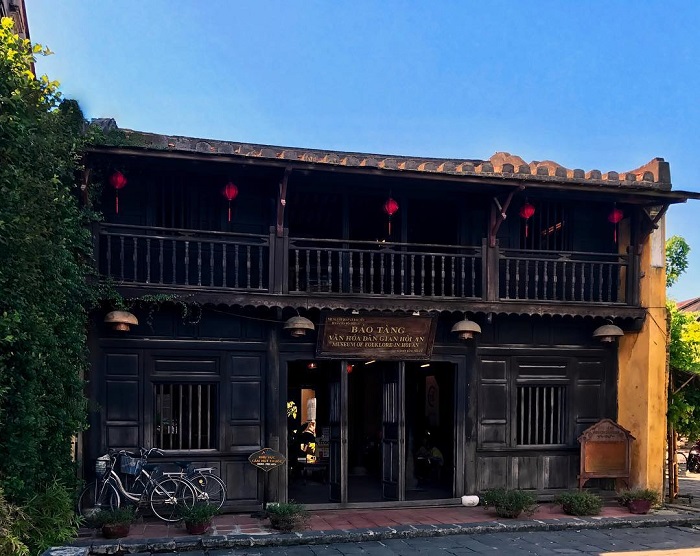
View more article: Ticket price list to visit Hoi An ancient town updated to the latest 2023.
How much is the admission ticket for Hoi An Museum?
The museums are part of the pricing structure of the Hoi An Ancient Town. One ticket includes access to 4 out of 21 designated attractions and is valid for 24 hours. The specific ticket prices are as follows:
- Vietnamese visitors: 80,000 VND per person for 4 attractions.
- International visitors: 120,000 VND per person for a choice of 4 attractions.
- For the Hoi An Silk Village, the separate ticket price is 50,000 VND per person.
What are the opening hours of the Hoi An museums?
The museums have different visiting hours, but most are open all day from Monday to Sunday. Because of this, visitors have the flexibility to choose and move around to explore, learn, and enjoy virtual experiences throughout the day.
For this reason, Hoi An’s assembly halls are increasingly attracting both domestic and international tourists. This is especially valuable for the younger generation, who often find it challenging to allocate time for travel and leisure activities.
Explore the Top 6 Must-Visit Museums in Hoi An on Your Journey to An Thanh
When visiting Hoi An for tourism, recreation, relaxation, or business, skipping the museums would be a missed opportunity. Below are 6 museums currently managed and developed by the Hoi An Cultural Heritage Management Center. They are sure to provide you with meaningful moments.
Hoi An Pottery Museum | Preserving Hundreds of Ancient Artifacts
- Address: 80 Tran Phu, Minh An Ward, Hoi An City.
- Opening Hours: 7:00 AM – 9:00 PM daily (except the 15th day of each month).
This is one of the pottery museums within Hoi An’s ancient town. With its grand scale, thanks to the assistance of Japanese experts in 1995, this place has become a center for preserving Hoi An pottery.
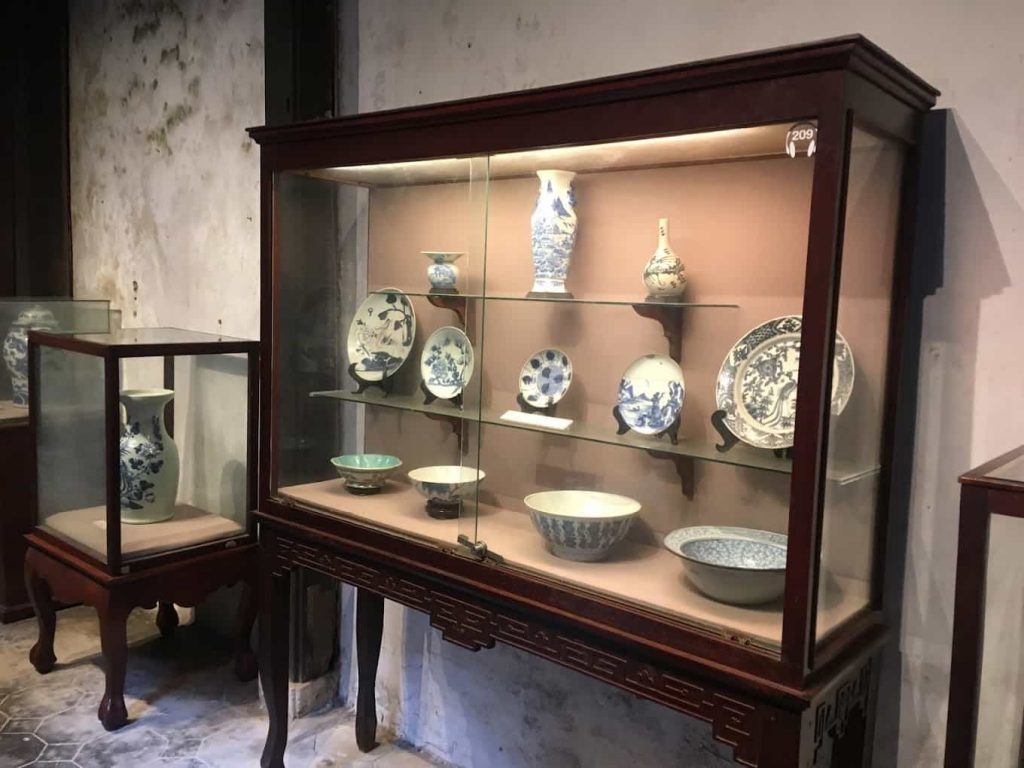
The Hoi An Pottery Museum exhibits 361 ceramic artifacts. Ranging from the 9th and 10th centuries to the 19th century, these artifacts allow visitors to understand the maritime pottery trade that once flourished. With its origin as an ancient house and simple wooden shelves, the space exudes an even greater sense of antiquity.
The ancient ceramic products here are incredibly unique and delicate, bearing witness to the skill of Vietnamese artisans. They were able to craft many beautiful and intricate pieces since ancient times.
Hoi An Museum of History and Culture – Recreating a Bustling Hoi An Trading Port
- Address: 10B Tran Hung Dao, Son Phong Ward, Hoi An City.
- Opening Hours: 7:00 AM – 5:00 PM.
Visiting the Hoi An Museum of History and Culture is like watching a valuable documentary about history. This was once an internationally bustling trading port, engaging in diverse trade with many countries around the world. The museum exhibits over 434 artifacts.
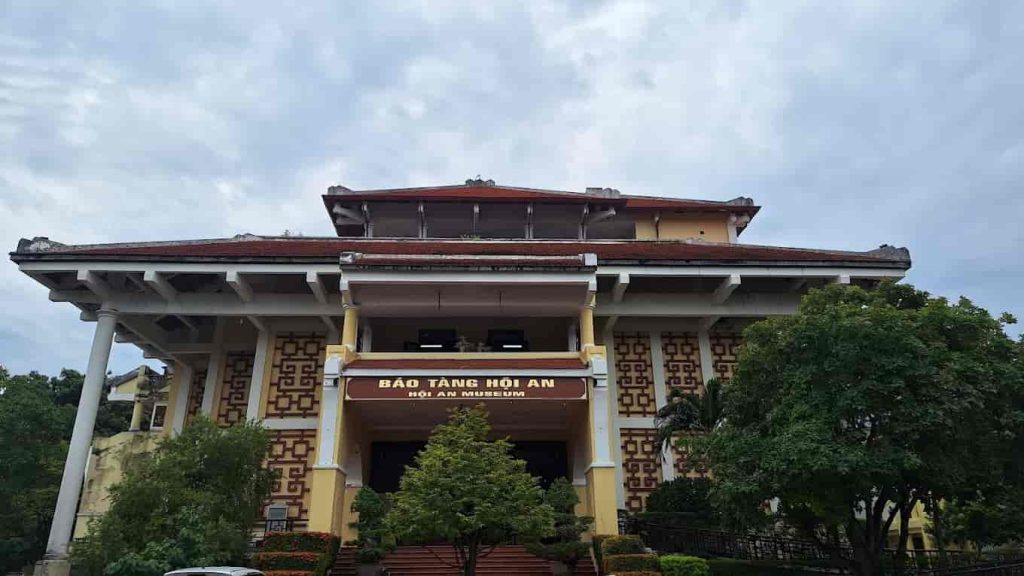
All artifacts are organized into sections according to their respective eras, allowing every tourist to fully understand a part of Hoi An’s memories. The museum is divided into 3 zones:
- The Prehistoric Era.
- Champa Culture.
- Dai Viet Culture.
Perhaps, it’s only when you witness these ancient artifacts with your own eyes that you can quickly grasp the history and culture of this region. From there, one can truly appreciate what is present today.
Sa Huynh Culture Museum – A Museum That Draws Hundreds of Visitors Each Day
- Address: 149 Tran Phu, Cam Pho Ward, Hoi An City.
- Opening Hours: 7:00 AM – 9:00 PM all days (except the 10th day of each month).
Established in 1994, the Sa Huynh Museum houses 971 artifacts related to Sa Huynh culture. The Sa Huynh people are believed to be the earliest inhabitants of the ancient Hoi An port, dating back 2000 years. The clothing, utensils, and jewelry of the Sa Huynh people are displayed, providing insights into their history.
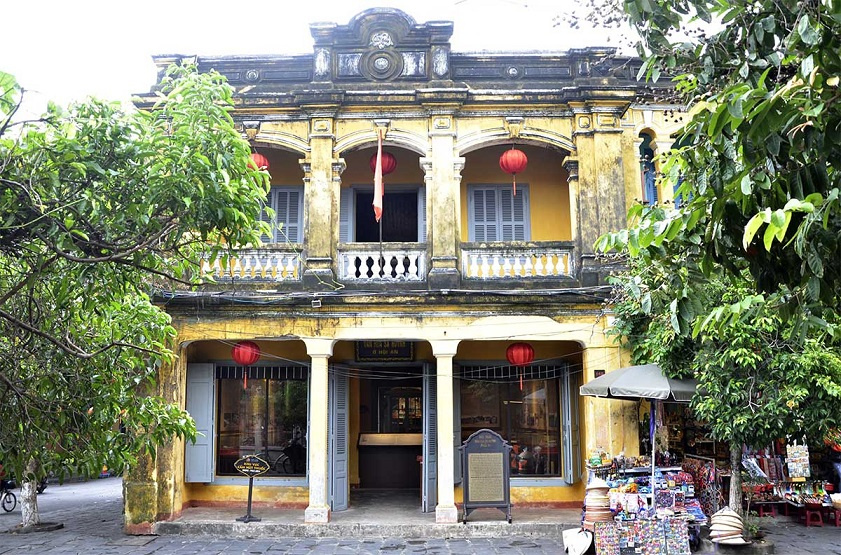
Inside the museum, there is a section dedicated to the customs and traditions of the Sa Huynh period, including funeral rituals and marriage ceremonies. It even delves into the profound beliefs about death that people held at that time.
Currently, the museum holds over 216 artifacts. For history enthusiasts, this is undoubtedly an unmissable destination in Hoi An.
Hoi An Museum of Folk Culture
- Address: 33 Nguyen Thai Hoc, Minh An Ward, Hoi An City.
- Opening Hours: 7:00 AM – 9:00 PM all days (except the 20th day of each month).
Opening its doors to visitors on March 24, 2005, the Hoi An Museum of Folk Culture allows tourists to fully explore ancient Hoi An. The museum vividly showcases distinctive cultural values through different periods, presented in a 57-meter-long and 9-meter-wide building.
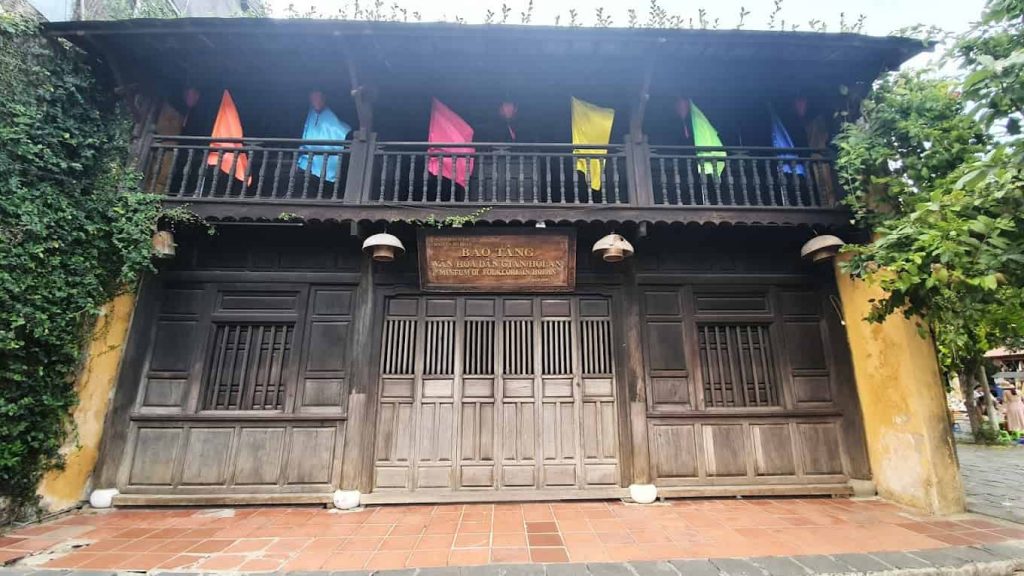
With hundreds of intricate, impressive carved works, sculptures, and delicate carvings, these products represent the work of generations of Hoi An craftsmen. Through artworks like silk paintings, porcelain bas-reliefs, and bronze statues, the unique cultures of different regions in Hoi An are vividly portrayed.
Moreover, visitors to the Hoi An Museum now can also observe traditional art forms, such as Thiencau dance and Bai choi singing. This allows viewers to gain a deeper understanding of the customs and daily life of the people from the distant past.
Museum of Traditional Medicine – Located within Hoi An’s Ancient Town
- Address: 46 Nguyen Thai Hoc, Minh An Ward, Hoi An City.
- Opening Hours: 7:00 AM – 9:00 PM all days.
The Museum of Traditional Medicine only began operating on March 16, 2019. It’s located in an ancient house within Hoi An’s ancient town. Here, over 200 artifacts and many traditional medical documents and materials related to Vietnamese medicine are displayed. Numerous ancient traditional medicine books are valuable references for modern medicine today.

The museum is divided into 6 exhibition areas. On the ground floor, the traditional Northern Medicine shop is recreated with cabinets of herbs, examination rooms, pulse taking areas, and treatment spaces. The rear area is where the processing of Northern Medicine is demonstrated. The drying area showcases the process of drying and storing various medicinal herbs.
The second floor is divided into several rooms, one of which introduces the traditional medicine profession, along with its equipment and tools. The rear room houses documents, preserving hundreds of valuable ancient materials. Thanks to this traditional medicine museum, the appeal of Hoi An’s ancient town has been further enhanced.
Hoi An Silk Museum – Attracting Visitors’ Attention
- Address: 28 Nguyen Tat Thanh, Tan An Ward, approximately 1 km from the center of the ancient town.
- Opening Hours: 8:00 AM – 9:00 PM.
This is undoubtedly an exciting destination for many tourists. The Hoi An Silk Museum recreates the sericulture and silk weaving craft that has been present in Hoi An for over 300 years. Here, tourists can observe the traditional sericulture process and witness the stages of creating silk fabric.

Inside the museum, ancient details and images of raising silkworms, creating cocoons, and spinning silk are presented. Visitors can gain a better understanding of the historical Silk Road at sea, which experienced its own ups and downs over time. Today, the silk industry is being revitalized in the Hoi An Silk Village. This helps tourists gain a deeper appreciation for traditional crafts and contributes to the preservation and development of the silk trade.
See More: Top 5 Assembly Halls in Hoi An – Everything You Want to Know
The exceptionally unique and renowned museums of Hoi An are no less impressive than the 6 names mentioned above.
Perhaps no city is as rich in historical and cultural value as Hoi An. To attest to this fact, there are numerous museums covering various aspects. On DanangPrivateCar.com’s, we’ve introduced 6 famous museums.
Now, let’s explore the locations, memorials, exhibition halls, and parks… These are places that also showcase and preserve the ancient values of the history and culture of Hoi An, Quang Nam.
Comrade Cao Hong Lanh Memorial House.
- Address: 129 Tran Phu, Hoi An.
- Opening Hours: 7 AM – 9 PM daily.
Also known as the Duc An ancient house, Comrade Cao Hong Lanh Memorial House spans 700m2 and is 180 years old. This Hoi An museum is the only ancient house owned by Vietnamese people. It preserves the architectural beauty of ancient Hoi An.
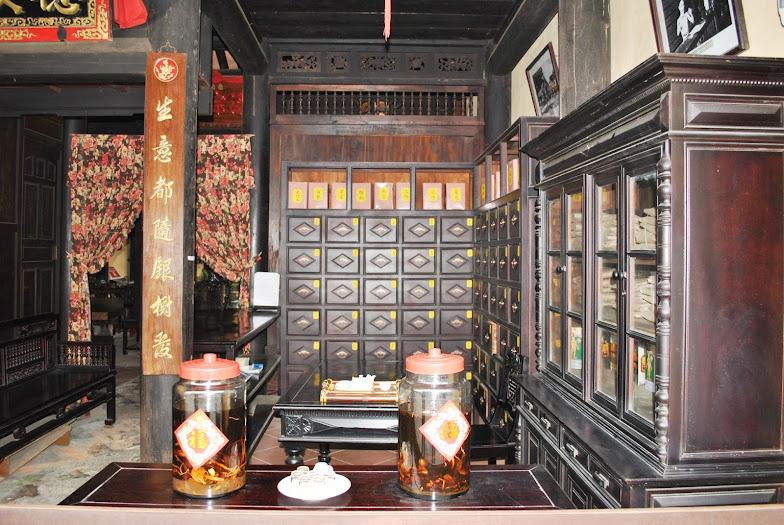
The Hoi An ancient house follows the traditional Vietnamese architectural style. There is a small courtyard in the middle of the house to ensure rooms are cool throughout the year. The house is constructed primarily with wood and tiled in yin-yang style.
This is where artifacts related to Comrade Cao Hong Lanh are displayed. They include shoes, clothing, photos… All of these portray an outstanding figure of the nation, someone who sacrificed for the revolution and national independence. Visitors, especially the younger generation, will come to understand the significant sacrifices he made for the country and develop a deeper love and respect for the nation.
Hoi An Revolutionary Tradition Room.
- Address: 10B Tran Hung Dao, Hoi An City, Quang Nam Province.
- Opening Hours: 7 AM – 9 PM.
This is precisely one of the museums in Hoi An that showcases artifacts related to the revolutionary history of the people of An Thanh. It houses more than 377 documents and valuable artifacts. It recreates the heroic years of the resistance against foreign invaders.
Hoi An Gemstone Museum.
- Address: 130 Nguyen Thai Hoc, Minh An Ward, Hoi An City, Quang Nam Province.
- Opening Hours: 8 AM – 4:30 PM (Closed on weekends).
This is one of the Hoi An museums that preserves over 600 types of gemstones. Many of them remain in their natural state, unaltered. The museum features numerous sculptures, bas-reliefs, and valuable gemstone jewelry.
However, the Hoi An Gemstone Museum is closed to visitors on weekends. If you wish to admire the gemstones, be sure to plan your visit carefully.
Thanh Ha Pottery Park.
- Address: Thanh Ha Ward, Hoi An City, Quang Nam Province.
- Opening Hours: 8:30 AM – 5:30 PM.
Ticket Prices:
- Adults: 40,000 VND/ticket.
- Children: 20,000 VND/ticket.
The Thanh Ha Pottery Park is also known as a beloved Hoi An museum. It’s a unique and ideal check-in spot for the younger generation. It’s a place to explore, discover, and learn about the history of pottery in Hoi An.
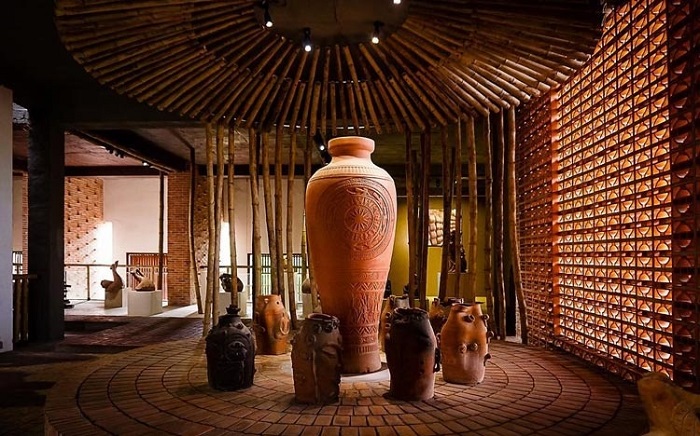
The park is like a museum, preserving pottery products dating back 600 years. Especially inside Thanh Ha Pottery Park, visitors can experience pottery making, observe the process of creating handmade pottery products. The artisans of Thanh Ha pottery village have even recreated a miniature world with magnificent structures from around the world.
What should you consider when visiting Hoi An museums?
All the museums in Hoi An are ancient structures and house ancient artifacts, so every visitor should take note of the following points to ensure convenience and enjoyment throughout the trip.
Do not touch the exhibited artifacts
The artifacts displayed in the museums are all ancient items, which are not only valuable but also fragile due to the passage of time. Even a slight touch could cause them to fall, break, or get damaged beyond repair. Adhere to the museum’s rules, which usually only allow observation.
Maintain general cleanliness and order throughout the museum area.
Always be a cultured individual and maintain general cleanliness in all areas of the museum. Keep things orderly so as not to disrupt the exploration and learning experience of other visitors. Furthermore, remember that a museum is a place of respect, not a playground for casual laughter and amusement.
Take photos when allowed.
Many areas within the museums might not permit photography for various reasons. Respect the regulations to uphold the cultural atmosphere of the place. Even in designated photography areas, be cautious not to bump or touch the artifacts.
Supervise young children if they are accompanying you.
If you are visiting with young children, it’s important to manage them carefully to prevent any accidental tipping over or breaking of displayed artifacts. Always keep an eye on them, as they might wander off into separate sections of the building.
When is the suitable time to visit Hoi An museums?
Museums are spaces for exhibiting artifacts indoors, so you can visit them during any season of the year, including both the sunny and rainy seasons in Hoi An. However, based on Sơn Trà Travel’s travel experience, the dry season is still the best choice.
The reason is that from March to September, there is less rain, and the beautiful sunshine makes it more convenient to travel to the museums. After exploring the museums, you can quickly move on to the assembly halls, temples, and pagodas located within the ancient town. You could even visit traditional craft villages such as Kim Bồng Carpentry Village and Trà Quế Vegetable Village.
If you haven’t planned your trip during the dry season, you can still visit Hoi An during the rainy season. During this time, there’s still a mix of sunshine and rain, and viewing ancient artifacts against the backdrop of rain can provide a unique experience.
What local delicacies should you enjoy while visiting Hoi An museums?
Your journey to explore Hoi An has begun, and don’t forget to explore the unique culinary world here. Hoi An is not only known as a tourist city but also famous for its many delicious and unique dishes.
Hoi An-style Quang noodles.
Before embarking on your adventure, visit some Quang noodle stalls to ensure you’re well-fed before starting your journey. These noodles are fragrant and slightly sweet, with handcrafted noodles that provide a satisfying breakfast without feeling too heavy.

Quang noodles are a renowned Hoi An specialty, even attracting international visitors who want to experience it when visiting Vietnam. With varieties like chicken Quang noodles, shrimp and meat Quang noodles, frog Quang noodles, and jellyfish Quang noodles, you’ll have plenty of options to choose from.
Hoi An Bread.
As a Vietnamese culinary representative that has gained international recognition, Hoi An Bread has received praise from foreign media for its great taste and uniqueness. This street food may be simple and easy to prepare, but it’s incredibly flavorful and suitable for breakfast or any time of the day.
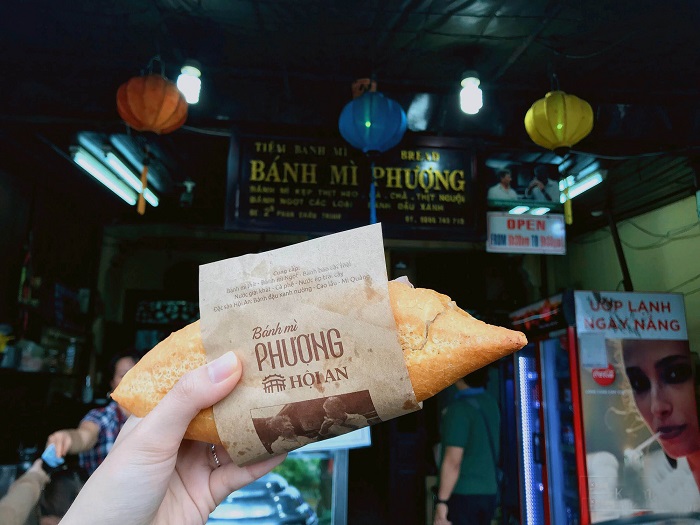
Hoi An Sweet Soups.
Hoi An isn’t just a city with time-tinged rooftops; it’s also home to high-quality sweet soups. From various types of sweet bean soups to corn sweet soups, served with fragrant, creamy coconut milk. Moreover, despite being a tourist city, these sweet soups are sold at affordable prices.
Transportation to Hoi An Museums.
To reach Hoi An, you need to go to Da Nang Airport. From there, you can travel to Hoi An by means of transportation like renting a motorbike, taking public buses, or using taxis. Each option has its advantages. If you choose to rent a motorbike in Da Nang, it costs around 80,000 VND per day and offers comfort and convenience.
Additionally, you can also rent a private car with a driver in Hoi An from DanangPrivateCar.com’s. This option is suitable for groups of friends, families, or older individuals, as having a private vehicle provides flexibility and comfort. Our basic English-speaking drivers will meet you at Da Nang International Airport with your name on a sign or at your hotel lobby in Da Nang, taking you to Hoi An as quickly as possible. You can book a private car trip from Da Nang to Hoi An or a day trip from Da Nang to Hoi An.
Hoi An museums are evidence of a historical era and cultural development. If you have the chance to visit Hoi An, make sure to stop by these museums to gain a better understanding of the people and to enrich your own knowledge and experience. Once again, thank you for reading this article.

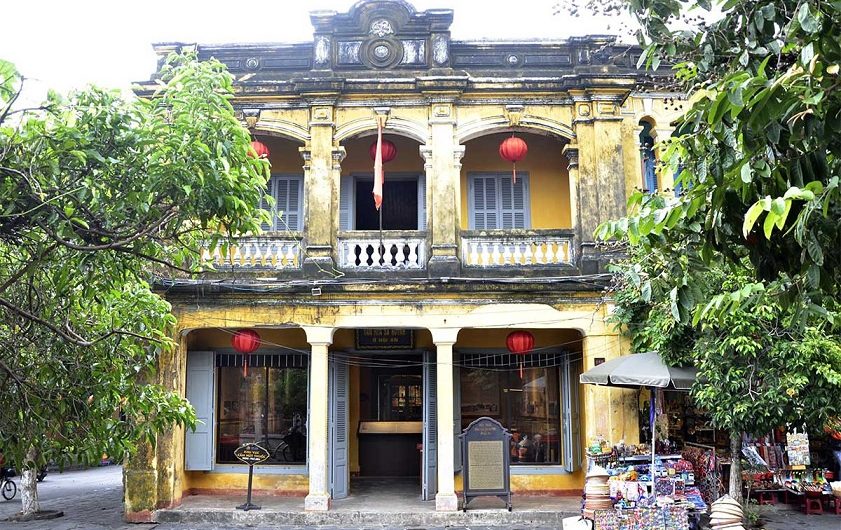
Comments